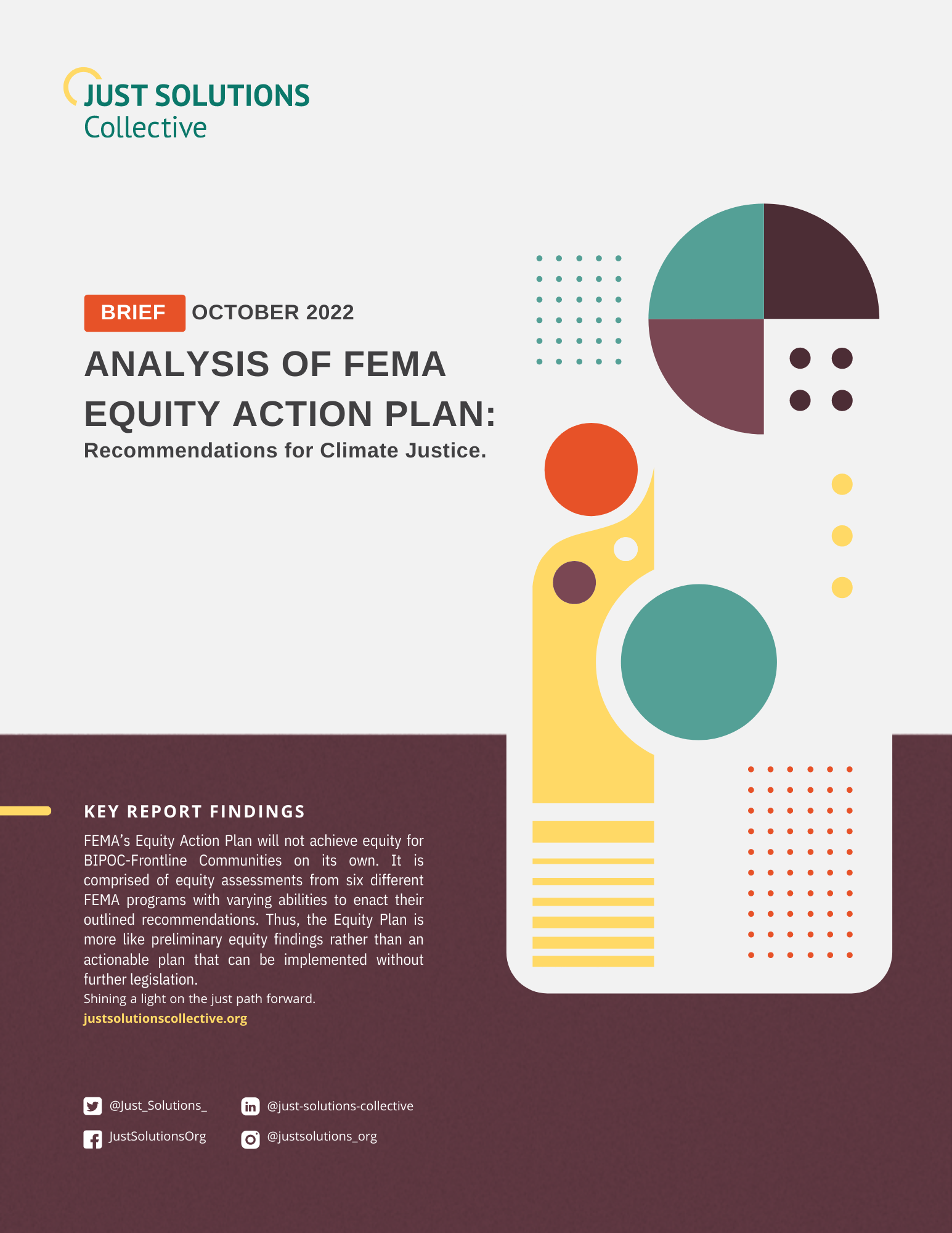Primary Author: Cristina Muñoz De La Torre
In this brief, we cover what is in FEMA’s Equity Plan, whether the plan will achieve equity for BIPOC and frontline communities, and we identify recommendations for advocates.
Since the publication of Equity Action Plans from multiple federal agencies in April 2022 in response to Biden’s Executive Order 13985, many environmental justice and climate justice advocates are asking: what is next? How will federal agencies implement the plan and to what extent do the plans outline equitable actions? Key to environmental and climate justice issues is the Federal Emergency Management Agency (FEMA), whose mission is to help people before, during, and after presidents declare emergencies or disasters. In the brief, Director of Programs Research, Cristina, reviews FEMA’s Equity Action Plan with six criteria in mind.
Whether the Equity Plan clearly:
- Identifies BIPOC and Frontline communities as a priority
- Outlines specific equity actions in their recommendations
- Provides relevant and measurable equity metrics
- Communicates outreach plan to underserved groups
- Proposes accountability to underserved groups
- Structures internal or inter-agency accountability
For a breakdown of what each program is and more details on their equity assessment, download the solution above.
Policy recommendations
- FEMA should leverage the Stafford’s Act non-discrimination clause and the National Advisory Council’s definition of equity to better define equity, equity actions, and its related outcomes. Of special concern is that FEMA’s definition of equity does not include low-income or poverty.
- All programs need to improve their measures of equity outcomes and provide opportunities for external and public evaluations, by making relevant data public, including the race/income demographics of applicants.
- All programs should create robust outreach plans to BIPOC & frontline communities and developed proposed plans for how FEMA programs will be held accountable or at least be transparent to these communities.
- FEMA indicates “moving forward, FEMA will work to clarify the Recipient’s legal responsibility and to structure a more comprehensive reporting process…to develop and report on their [Recipients and Subrecipients] strategies for equitable response and recovery.” This effort is a right step forward and should also indicate the extent to which equity will be enforced once those reports are evaluated and any consequences.
- The Public Assistance program should provide a follow-up assessment and indicate the extent to which equity efforts in response to COVID-19 will translate to the rest of its programming. Overall, this program needs to identify relevant equity actions and outcome metrics.
- The Individual Assistance program has several good equity actions, however, there needs to be specific measures to address bias in FEMA inspections which assess damage value of homes and plays a significant role on eligibility of applicants and how much money individuals receive. There should also be specific technical assistance to help low-income communities and those with lower social capital to navigate, if they want to, an appeal process. Equity outcomes should also include number of new applicants and quantity of assistance provided to low-income and applicants of color as specific equity metrics.
- The Hazard Mitigation Assistance program outlines several equitable actions and measurable outcomes. If HMA will move forward on “a pilot for the Hazard Mitigation Grant Program… to test how partnerships with private nonprofits, non-governmental organizations (NGO) and philanthropic organizations can provide the non-federal match and ease the financial burden on underserved communities” than a recommendation is to include providing direct capacity and funding (potentially through other federal programs) and to especially work with BIPOC and frontline CBOs.
- The Nonprofit Security Grant Program’s equity plan was the weakest out of all the programs. There is no indication of current understanding of who is marginalized in this program nor a strategic plan to identify these groups. There needs to be more comprehensive outreach that is on the ground rather than solely relying on desktop analysis. Focus groups, outreach to BIPOC and frontline CBOs are strategies that can better inform equity actions and needs.
